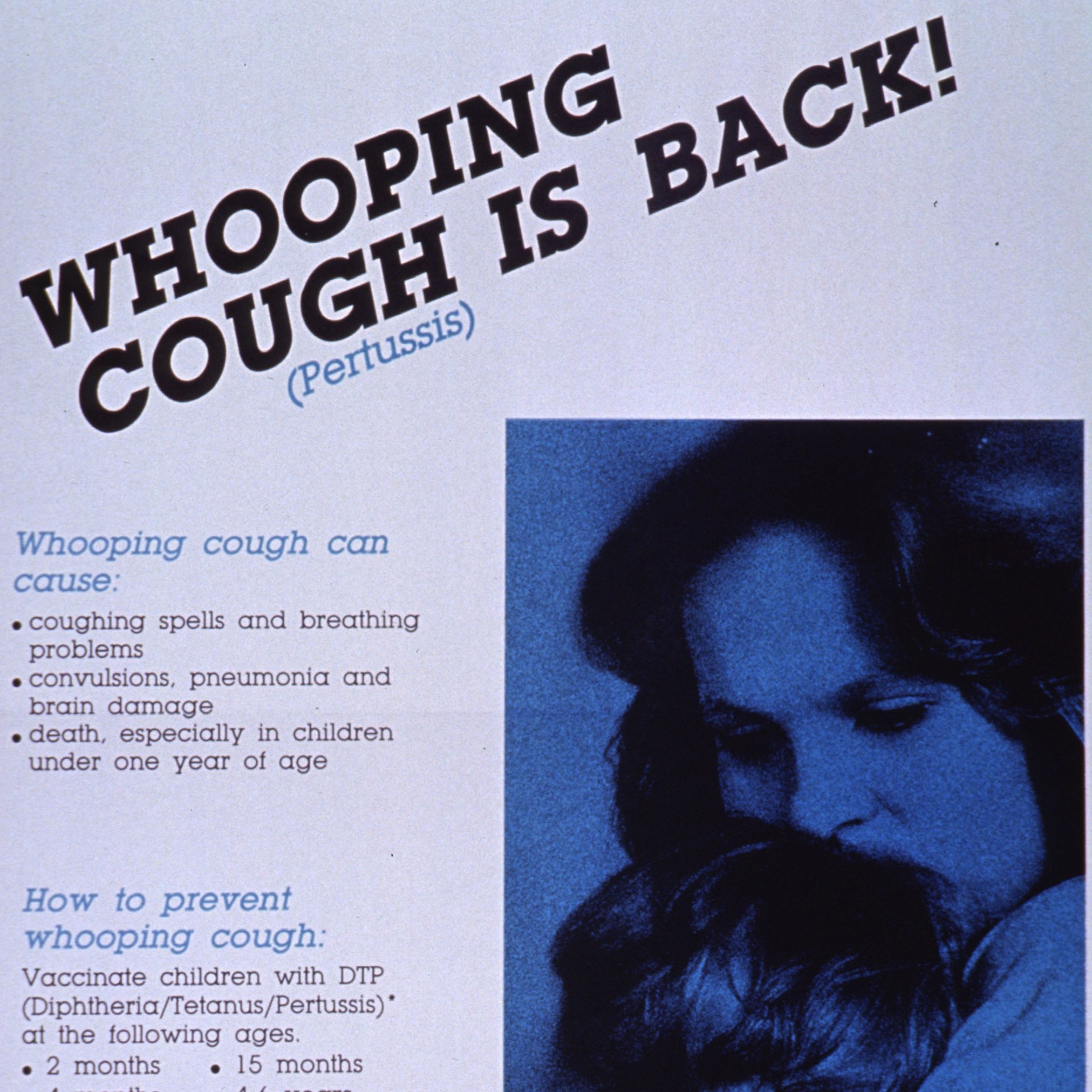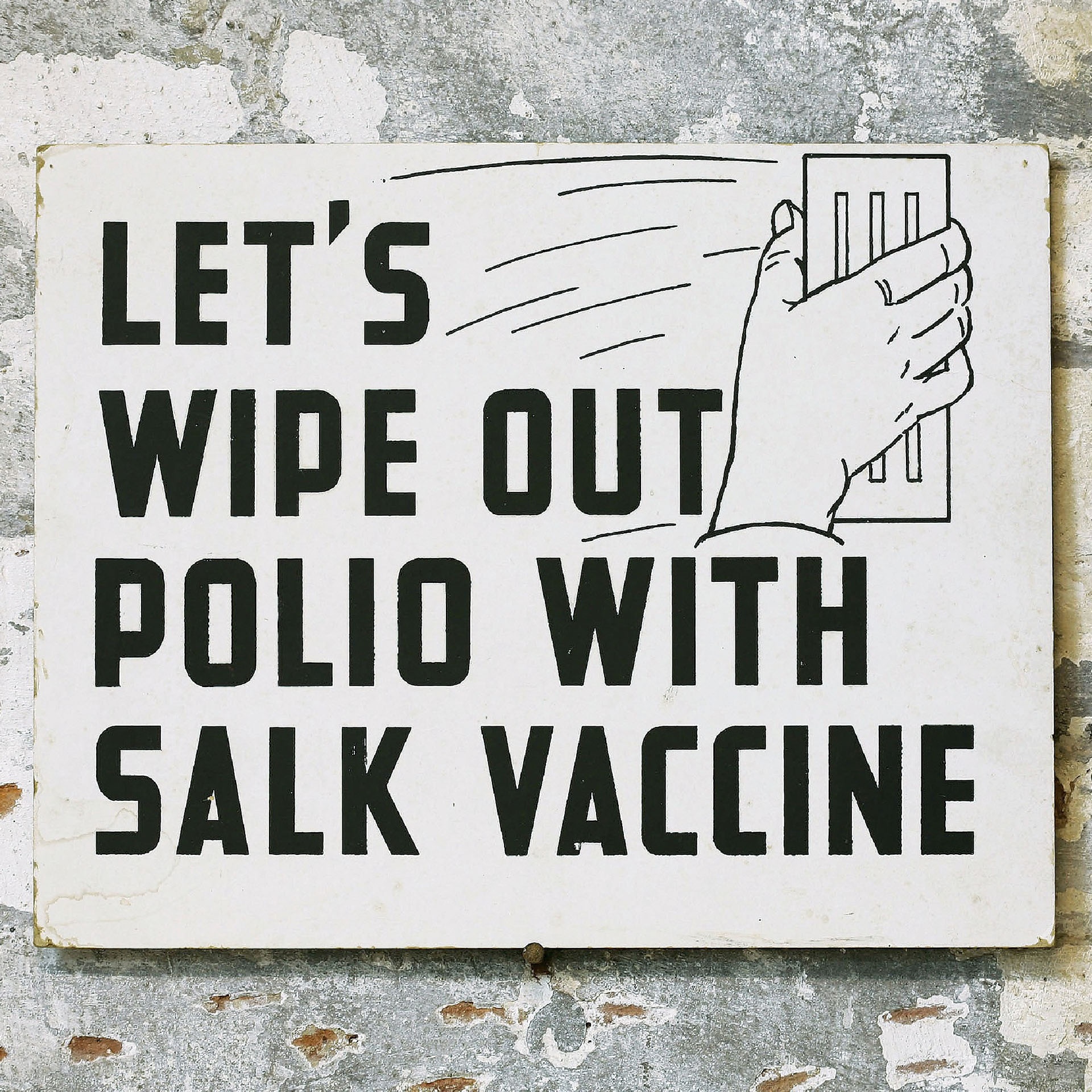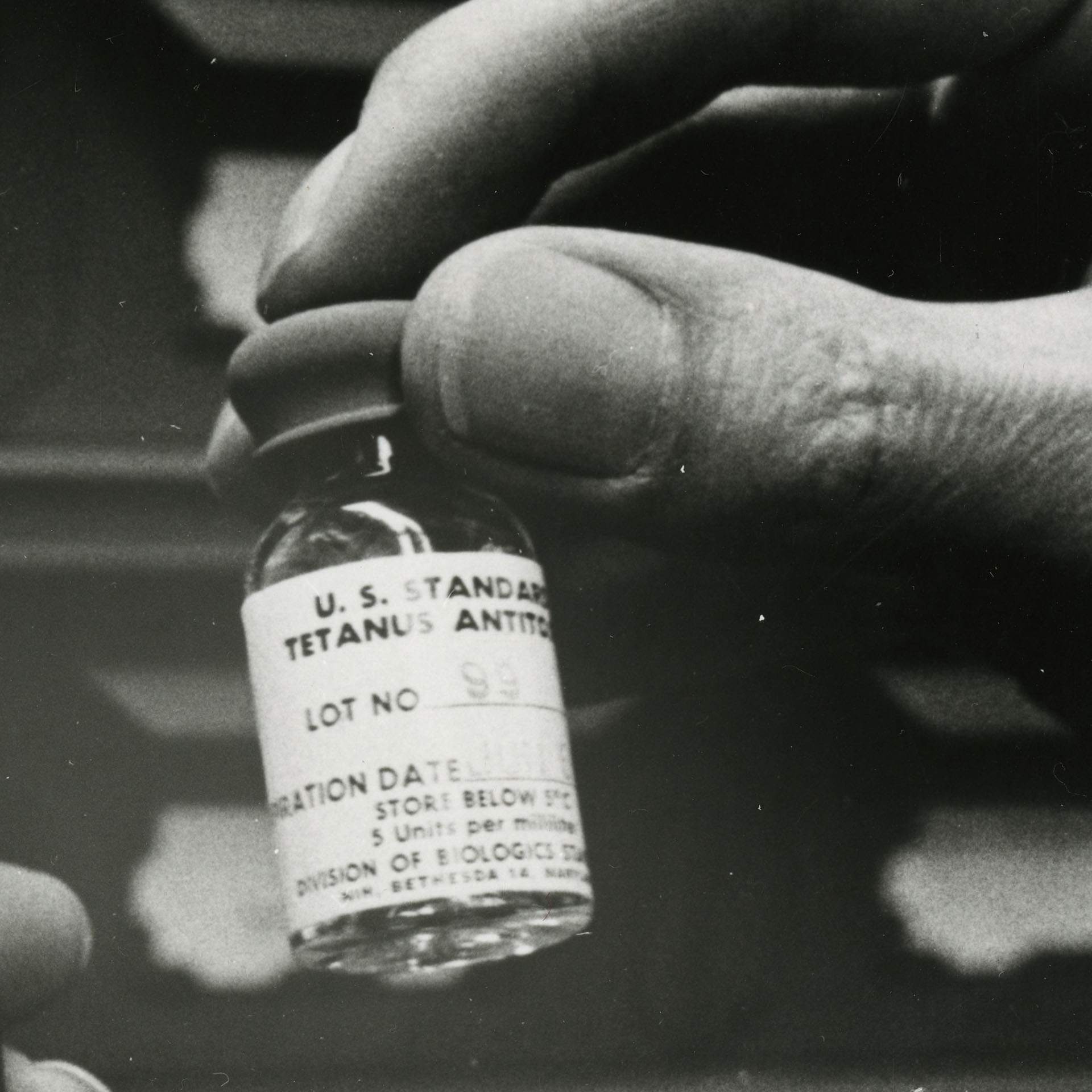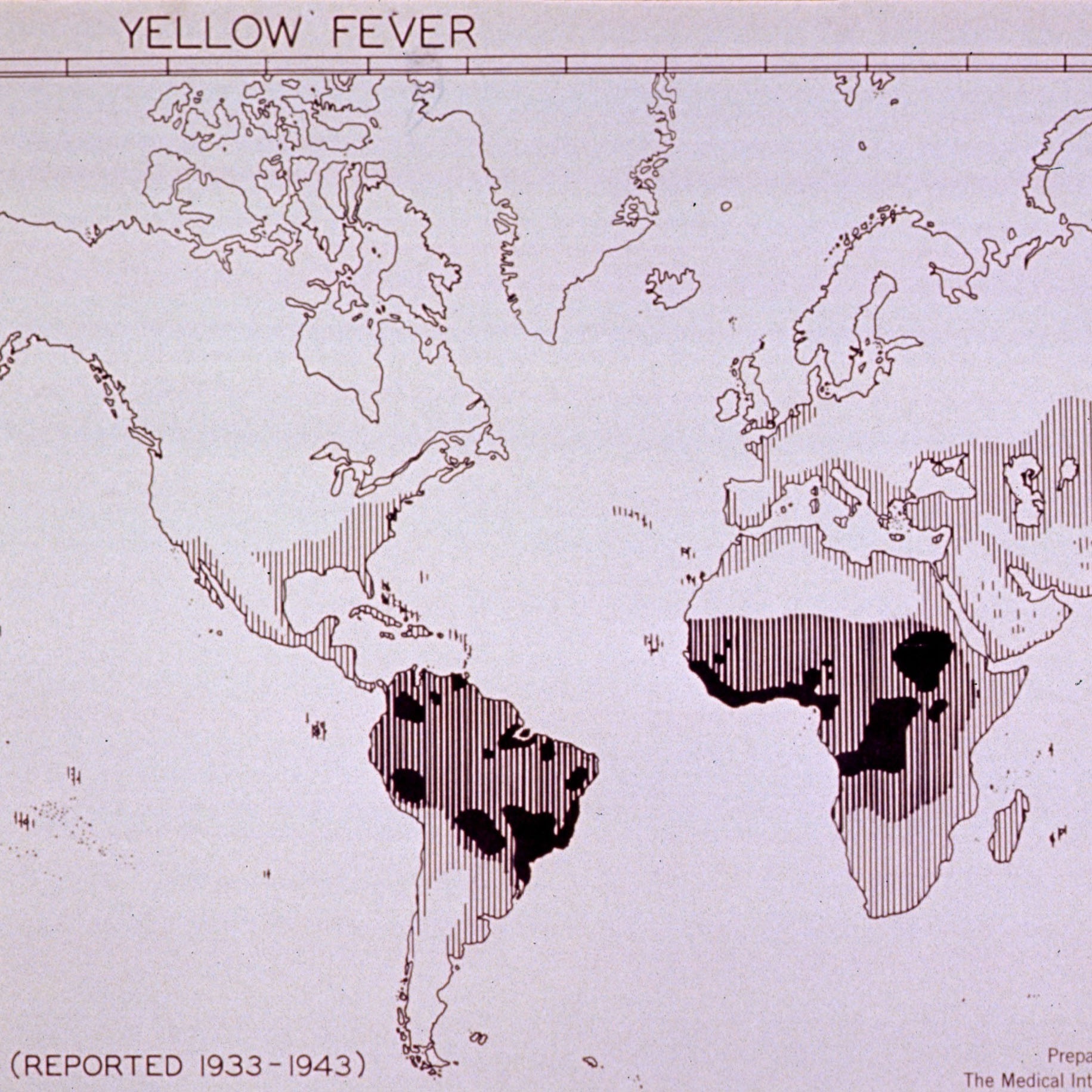Diseases
These are some of the diseases which DBS researched and the related biologics which they regulated. Biologics are biological products made to prevent or treat a disease. They include vaccines, blood and blood products, allergenics, somatic cells, gene therapy, tissues, and recombinant therapeutic proteins.
In 1934, the first human blood product licenses were issued to two pharmaceutical houses for human immune globulin prepared by ammonium sulfate precipitation. After the development of cold ethanol fractionation procedures, additional new products were licensed including normal human plasma (1940), normal serum albumin (1941), and immune serum globulin (1943). The first license for interstate shipment of whole blood, and the first blood bank license was issued to the Philadelphia Blood Bank in 1946. Each of these products was licensed under Section 351 of the Public Health Services Act and was considered analogous to therapeutic serum.
Cholera has existed since at least 500 B.C. and is a bacterial disease transmitted in water or food contaminated with Vibrio cholerae bacteria. Symptoms typically include diarrhea and vomiting and can be mild or fatal. The earliest discovery of the bacteria was in 1854 by Italian Filippo Pacini. His work went mostly unnoticed.
Human hepatitis has been recognized since the dawn of recorded history, but proof of infectious cause and delineation of hepatitis A (infectious hepatitis) from hepatitis B (serum hepatitis) were not established until the first half of the 20th century. Hepatitis A, hepatitis B, and hepatitis C are liver infections caused by three different viruses. Although each can cause similar symptoms, they are spread in different ways and can affect the liver differently.
Human Immunodeficiency Virus (HIV) is a virus that attacks the body’s immune system. If HIV is not treated, it can lead to Acquired Immunodeficiency Syndrome (AIDS). There is currently no cure for HIV, but with proper medical care, it can be controlled, and people can still live long, healthy lives.
As early as the ninth century, a Persian doctor wrote about measles. In 1757, Dr. Francis Home, a Scottish doctor, demonstrated that measles is caused by an infectious agent in the blood. In 1912, measles became a nationally notifiable disease in the United States, requiring doctors and laboratories to report all diagnosed cases. An average of 6,000 measles-related deaths were reported per year from 1912 to 1922. In the first half of the twentieth century, nearly all children got measles.
Pertussis, or whooping cough, is an acute infectious disease caused by the bacterium Bordetella pertussis. Outbreaks were first described in written records in the 16th century. Pertussis has an incubation period of seven to ten days. Symptoms in the early stages include running nose, sneezing, low-grade fever, and a mild cough. Symptoms in the middle stage include bursts of numerous, rapid coughs, due to difficulty expelling thick mucus, accompanied by a high-pitched whooping sound.
Few diseases scared parents in the early 20th century more than polio. It often struck in the warmer summer months, sweeping through cities and towns in epidemics every few years. Poliomyelitis (often just called polio now) is an acute paralytic disease. It’s an enterovirus, transmitted through contact with people, by nasal and oral secretions, and by contact with contaminated feces. Polio virus enters the body through the mouth, multiplying along the way and especially in the digestive tract.
From 1964–1965 there was a rubella epidemic in the United States and subsequently there were 11,000 stillbirths, miscarriages, and abortions, and at least 20,000 congenitally infected infants called “rubella babies.”
Testing for endotoxins (a toxin present in a bacteria cell that is released when the cell disintegrates) in injectable biologics was revolutionized in Building 29A by Drs. Edward Seligmann and H. Donald Hochstein. Endotoxins are part of the outer membrane of the cell wall of Gram-negative bacteria and had been discovered to be the cause of fevers in some patients receiving injections.
Tetanus is an acute, often fatal, disease caused by an exotoxin produced by the bacterium Clostridium tetani. Exotoxins are toxins released by a living bacterial cell into its surroundings. Symptoms of tetanus include generalized rigidity and convulsive spasms of skeletal muscles. The muscle stiffness usually begins in the jaw (lockjaw) and neck and then becomes more generalized throughout the body.
Typhoid fever is a bacterial disease caused by Salmonella typhi. Symptoms of typhoid fever are similar to other gastrointestinal illnesses and include fever, headache, nausea, constipation or diarrhea, loss of appetite and a rose-colored rash on the body. Typhoid fever spreads from person to person via contaminated food and water, and via the fecal-oral route. The bacteria only lives in humans, not animals.
Yellow fever had been around since at least the 18th century, and was known and feared throughout the 19th century, especially in port towns with the arrival of new ships. It was endemic in Cuba, so after the Spanish-American War, a Yellow Fever Commission was established in the United States to investigate. Walter Reed was the head of the commission, which established that mosquitoes transmitted the disease. The focus shifted to prevention via mosquito control.











